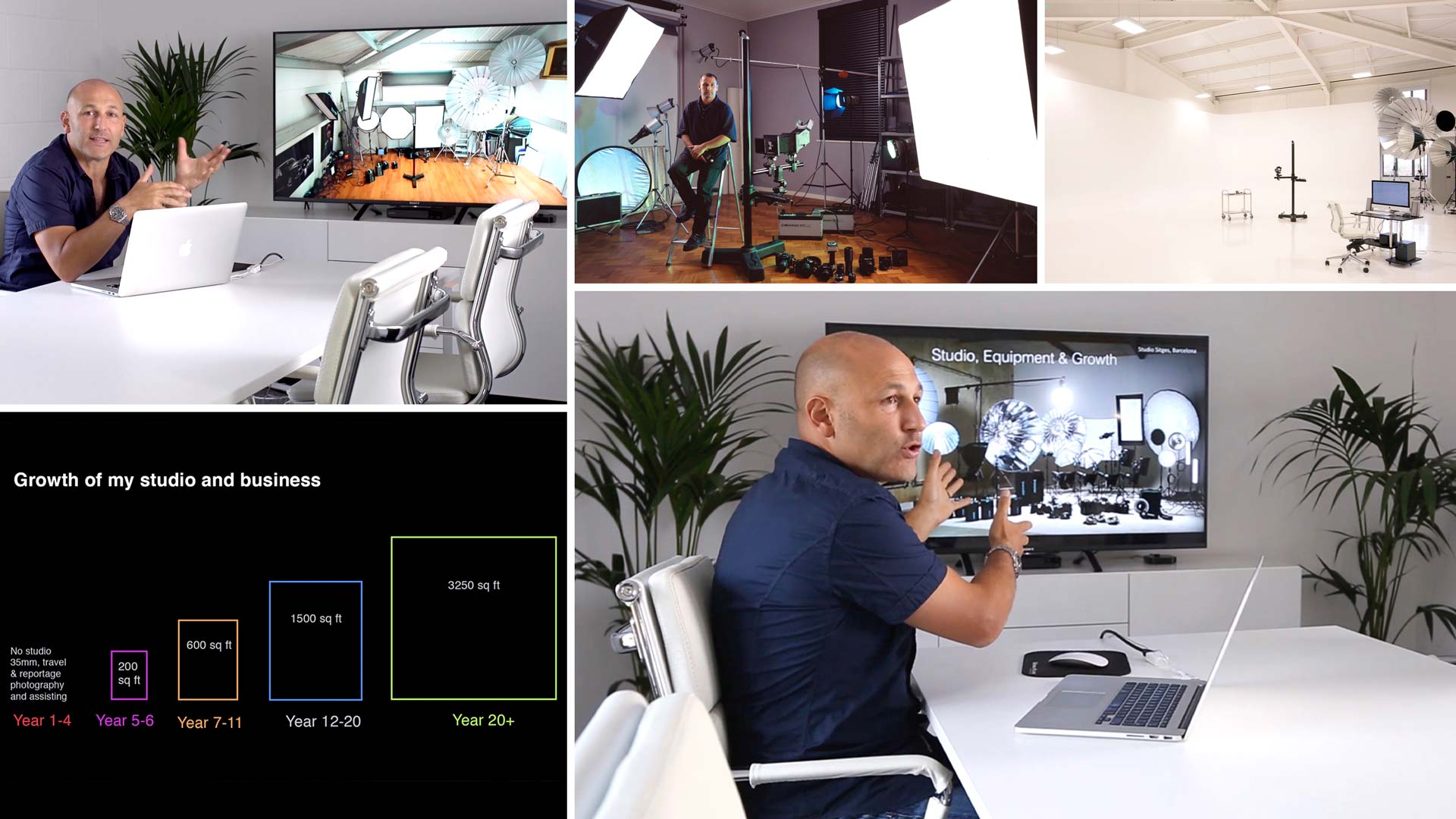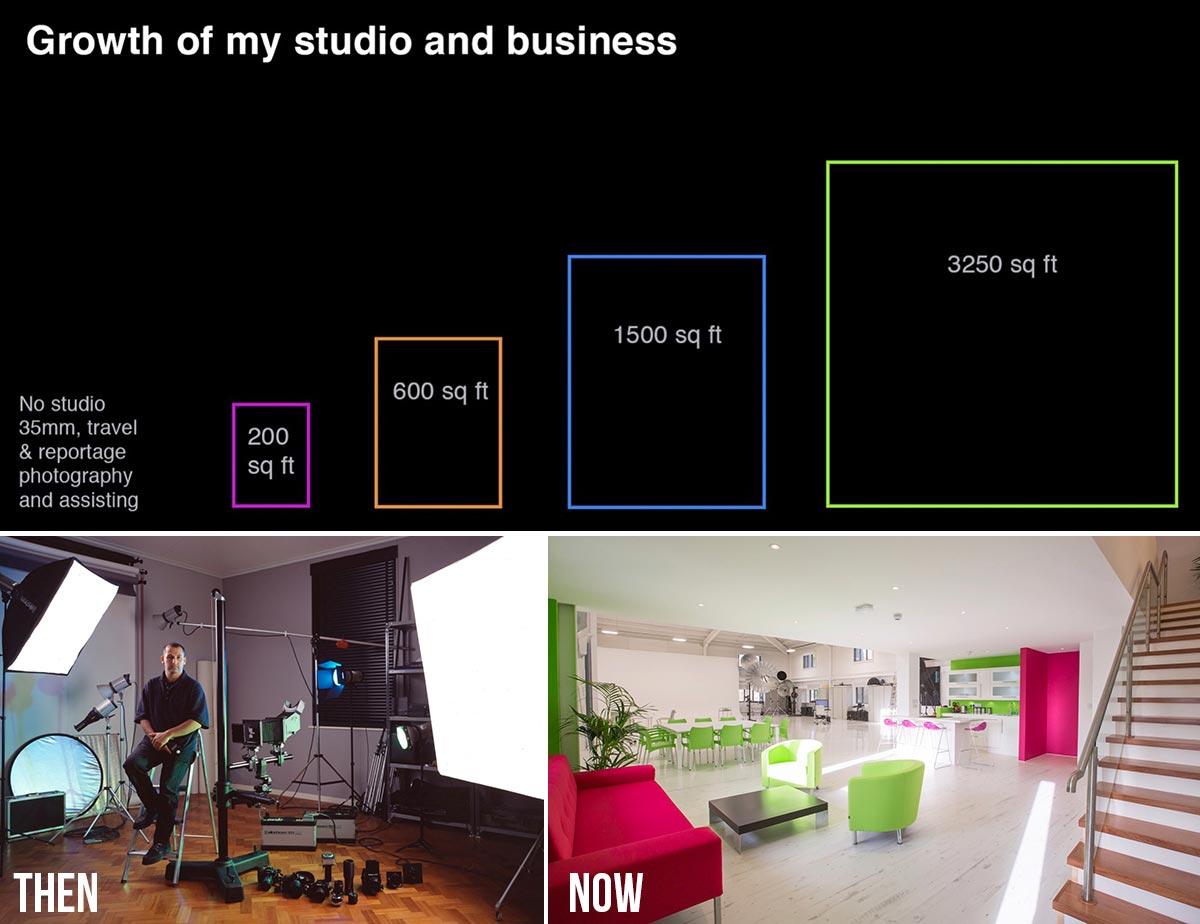Equipment and Growing Your Studio
As a business owner, the goal is always to grow and expand your business. However, this is not something that happens over night.
In this class, Karl talks honestly about the progression of his own business and how he has grown his studio over the years. He shares his insight and advice on how you can grow your own studio too. He explores the key thoughts and considerations when expanding a business, what to think about before investing and what you can do to sustain your business.
In this class:
- The growth and expansion of Karl Taylor Photography
- Thoughts and considerations when expanding your business and studio
- What to consider for expansion, growth and reinvestment
- What to consider when investing in your business
- Ways to facilitate a sustainable business
You may also be interested in our blog ‘Studio Photography – Finding the right studio for you’.
Questions? Please post them in the comments section below.



Comments
Thanks for a great course Karl!
It’s good to know the journey, so one can find similarities/relate to 🙂
Keep up the good work.
Thank you Sanket.
Dear Karl Taylor,
Thank you for providing us with a great course. I have a serious question.
I recently just set up a photography company in July. Bot me and my partner have got different backgrounds in photography. I do a lot of street and landscape photogragraphy which in my opinion is difficult to make money in that field unless you are well known. My partner has got a degree in Fashion photography from Australia.
We both intend to get serious with commercial photography for our business but we are clueless with where to start. All we’ve been doing the passed three months is just adding to our portfolio collaborating with other businesses for free. We are getting good reaction from our commercial shots so far. However, no money has been coming in unfortunately. We are worried and hope you could advise on how we could improve and start making money as we have invested a lot on equipments.
Thank You so much.
Hi Danial, yes I agree that street and landscape is a very difficult area but if between you and your partner with fashion and a more commercial angle it may be possible to come up with something that is commercially viable. I first recommend that you carefully watch this video – https://visualeducation.com/class/live-business-advice-for-photographers-2/ and then the other videos in our business section.
Hey Karl! Great chapter.
Do you think there is an age limit for breaking into/getting into commercial photography?
Would it be weird or there would be a barrier for someone that is not that young to introduce himself to the clients without a consolidated commercial portafolio?
My main area of work is filmmaking and i have a good resume on that, but for several years now i´been doing non-commercial portrait photography and have been thinking into making a full shift or at least opening commercial options on photography.
To be honest im tired of the filmmaking world and how demanding and looong each project can get, so im up to take the risk into diving into commercial photography, even thou it seems there´s a lot of competition and everybody is a photographer today.
I prefer the competition and get less money than spending 2 or 3 years working on the same film again.
When i compare my portafolio to other working fashion and portrait photographers from my country, i would say there´s not really a big difference, but still, my work is not meant for any companies so i cant say ¨this was for blabla¨.
Im a bit reluctant on present myself without any important client experience on my back.
Hi Diego, I think as you are coming from a filmmaking background then it wouldn’t be a problem as it’s the same industry. Also there are many successful ‘older’ photographers so I wouldn’t worry about that, personally I think the client only cares about the standard of your work and what you’re like as a person. So if you have a good website and portfolio that’s what counts.
Hi Karl,
In an effort to grow I rented the Hasselblad X1DII. I was VERY surprised at the qualitative difference from my Canon 5D Mark IV. So, I’ve decided to rent the H6D-100C this week. I’m curious to see if there’s a quality difference between a full studio camera and their newer line. I know I want to invest in a medium format system. I’m just not sure if I should start with the X1DII or possibly consider a used H6D. Obviously, I’ve yet to compare the two. Do you feel the H system will sustain? I’ve done a breakdown on Hasselblad’s releases. They haven’t provided a firmware update for almost two years for the H Series. And it does seem like they’re due for an upgrade. Is it maybe better to invest in the newer X lineup? Thanks for your time and expertise! My budget will allow for either system. I’m in this for life. – DJL
Karl, JUST AWESOME!!! This school is helping me grow tremendously!
A very useful video. Thank you! Also great to see a bit of background on you!
Thank you. It was also interesting for me going back in time and seeing where it all started.
The thing that really stuck in my memory from this presentation was when you explained about being happy, and how important it is. When ambition takes over from this key building block, it can destroy everything. Whatever we do, we should look for happiness first.
Hi Tim, sorry I missed this comment but having just read it yes absolutely that is a key takeaway from this chapter.
Hi Karl,
This is super-useful and great to see the progress and effort over the years.
I’ve recently made a decision to move away from my career and get closer to photography as a business, it’s an amazing journey with some ups and a lot of downs but your education programme is a game changer for me.
I’d love to ask you the question, if you would go back to the opening of your studio #1 today, what would you tell yourself? What advises would you give to yourself after ~16 years?
Take care,
Mark
Hi Mark, thank you for your comments. I would have made it a much higher priority to really understand the physics of light like I do now. Everything from Inverse Square Law, to refraction, spectrum, colour theory, hard, soft, fill, negative fill, global illumination and most importantly the emotion that light conveys. These are really the key fundamentals behind the images that I create now which is why I created Chapters 1-8 in this section https://visualeducation.com/portrait-photography/ with chapter 1 being the most important.
Thank you for your quick reply Karl, your 1 hour long video on light basics was the first I saw (it was recommended in one of the FB groups). It gave me a big push to watch further and study everything on this site. Please keep up the great work!
Hey
So I have a 250 sq ft space right now. It is 11ft wide and 22ft long. It feels just big enough to take portraits in there, but I would like to also be able to edit and have a workstation in there. Any suggestions on how to layout the studio to make this possible – is it even possible? We’ve been thinking about various modular equipment, like maybe having fold down tables on the walls or the likes. What do you think?
Hi Darren, of course fold down tables will save space but may be unworkable in terms of setting up your computer every time. It might be better to consider a small mobile workstation on wheels that you can move around the space.
How does one get “started” working in Papa New Guinea? Did you finance that yourself or were you working for National Geographic or something?
I think it’s easy for someone to get credibility if they can just jump a plane and shoot something exotic but what if you can’t do that?
I know a fella who was in the Military and basically he built his portfolio from deployments the Army sent him on but again, I think that was pure luck.
Hi April, I started by travelling the world living on a shoestring shooting travel and stock images and then trying to sell them. As I had some success with my work and sales I then decided to cover more particular stories and researched them and then proposed them to various magazines and newspapers as a freelancer. From this I had letter of interest but only offers of payment upon production of good quality work, so I decided to go for it and shoot and submit. I had many articles published from my work with Geo, Action Asia, American Express, Sydney Herald, Hong Kong Standard and the Gaurdian over the years. I also sold several articles to Airline inflight magazines. All of this was done by carefully researching my stories and then setting off to shoot them, not all were successful but enough were to pay my way to keep shooting. I did this for a few years and then decided I was never going to make enough money as a photographer and switched my interest to commercial advertising photography.
Hi Karl I’ve joined today and watched few of your great courses on buisness. I absolutely loved it. I think Broncolor and/or Hasselblad should make Karl Taylor signature product line.
Ha Ha maybe they should 🙂
I think that’s just the fitting out of the building. The camera and lighting equipment is another thing altogether.
Actually I’m more schocked that it’s only 120,000GBP. I thought the studio and the equipment was much more. It gives me a lot of hope of having this kind of space to work in.
Chapeau!
Hello Karl,
I’ll make it short and tell you: It was the best decision I’ve ever made to sign up for your courses.
Now I have a request.
I prefer photographing people and making videos of events.
My equipment is for financial reasons in the lower category. I own a Canon 750D and an EF-S 10-18mm 1: 4.5-5.6 IS STM.
I have experienced the following again and again. If a photographer has one, for example, 5D and a L lens, he gets the job. At many events, the organizers have nevertheless turned to me and told me that my work has been better.
Good equipment does not mean good work at the same time.
Nevertheless, I would very much like to improve my equipment.
I have three questions:
1. I could afford a Canon 80D, 5D is for my budget unfortunately too expensive for me. Is the 80D enough or do you have a different proposal?
2. I will specialize in portrait, wedding and videos and will not do anything else. What lens would you recommend for this work?
3. Does a lens always have to be the latest model?
Thank you very much Karl.
Best Regards
Amir
Hi Amir, I’m not too familiar with all the different camera bodies but I would suggest any of the Canon one’s that are a full frame camera would be your best choice. Then an 85mm 1.4 or 1.8 lens for portrait work, a wide angle zoom such as the 16-35 and then a 70-200 if your budget can stretch to it. Those are the lenses I use all the time. Many of my lenses are quite old so there is no problem with older lenses if they are in good condition.